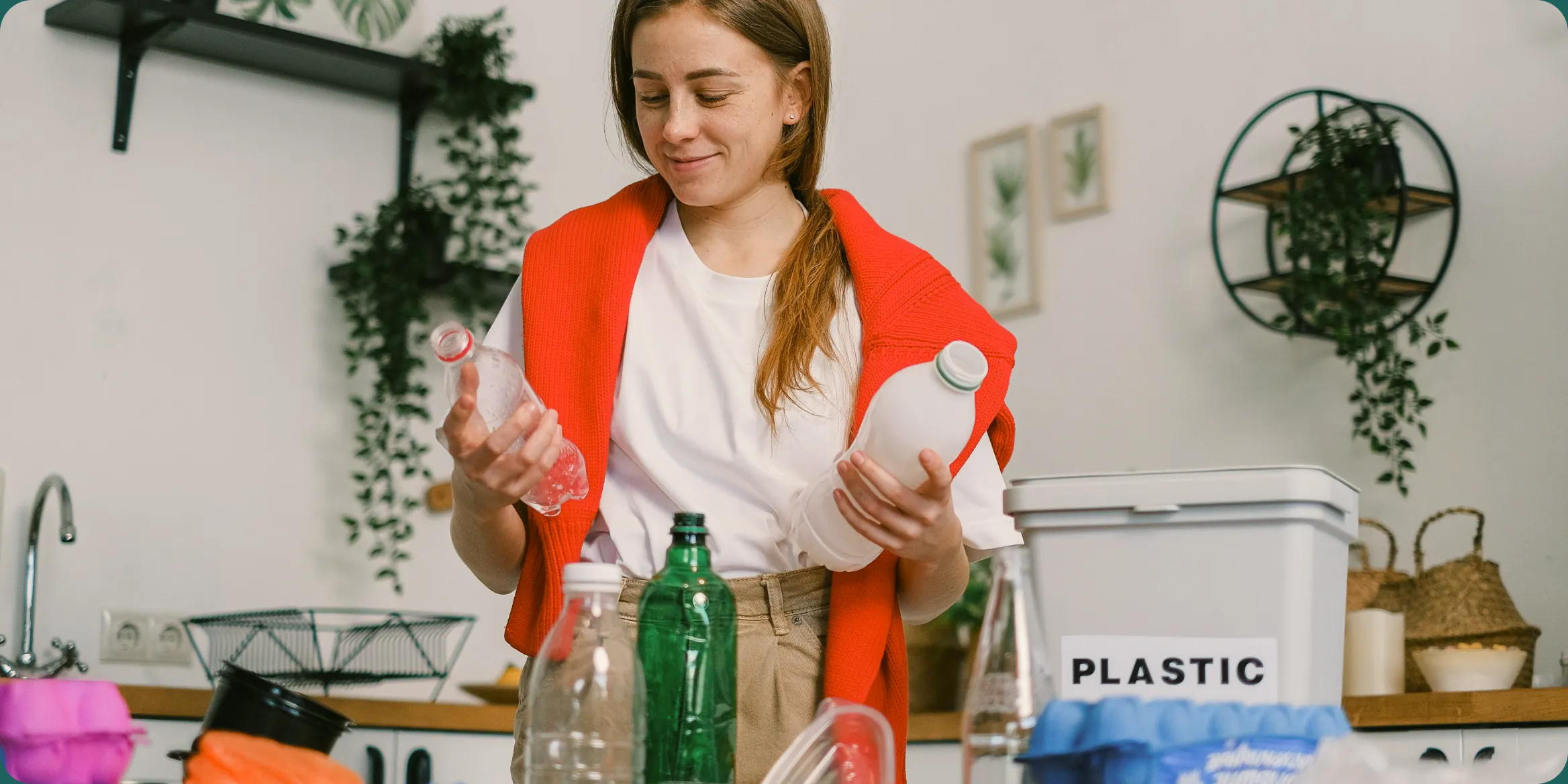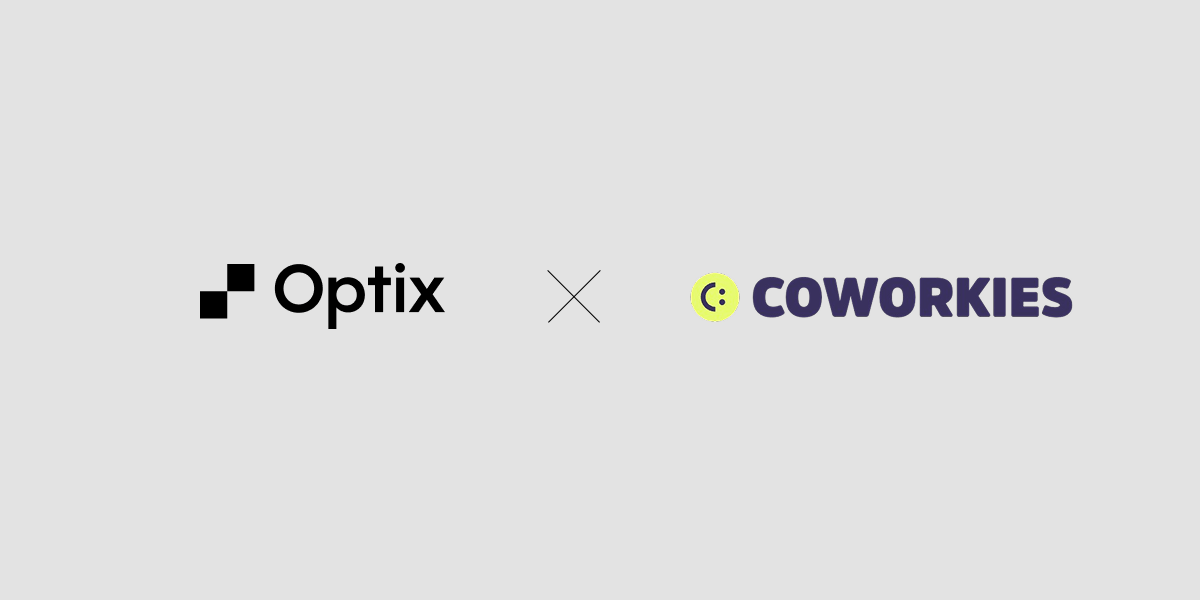
With climate change knocking on our doors, understanding how our choices impact the environment is top of mind for many of us.
Not only are people implementing sustainable practices in their own lives, they’re becoming increasingly aware of the impact that businesses have on the environment – and coworking spaces are no exception.
Do you recycle? Do you use eco-friendly materials? Are you printing off all of your member onboarding documents or are you distributing them online?
These are all things that you should be thinking about, because we can tell you right now, your members are – especially millennials and Gen Z.
Here’s why it matters.
Automate your green coworking space with Optix

What is a green coworking space?
A green coworking space, also called an eco-friendly coworking space or sustainable coworking space, is a shared workspace that makes a conscious effort to implement environmentally-friendly practices into their day-to-day.
The space encourages environmental awareness and the protection of natural resources in local communities, while providing a clean and green working environment.
This could include:
- Installing solar panels if you’re located in a sunny area
- Implementing energy efficient technologies and energy efficient practices
- Using smart lighting systems
- Using green cleaning products and fewer toxic chemicals
Creating an eco-friendly coworking space shouldn’t add to the list of challenges that come with running a coworking space. In fact, even the smallest of changes can help you to reduce the environmental footprint of your space and create a positive environmental impact in your community.

What are the benefits of green coworking spaces?
Creating a greener workspace has its benefits for the environment, but did you know it could benefit your business, too? Here’s how.
1. Positive brand reputation
Being green reflects positively on your brand, especially when it comes to future generations. 71% of millennials agree that climate change should be a top priority.
With young professionals making up the target audience for many coworking spaces, this is an important statistic to keep in mind.
If your brand develops a reputation as an eco-friendly business and you lean into that as your differentiator, you may be able to generate positive word-of-mouth referrals, which in turn can grow your business over time.
2. Improved productivity
Increased productivity (when compared to the home) is commonly cited as one of the top reasons to join a coworking space.
Working in a green office space, full of natural beauty and natural lighting, has been shown to increase productivity by as much as 26% according to Forbes. This is largely due to the health promoting benefits that often come with working in a greener space.
Better yet, you can market the potential to improve productivity to your community and lean into it as a unique selling point.
3. Reduced energy costs
Most businesses that rely on real estate costs – such as coworking spaces – will be acutely aware of energy costs. Adopting an eco-friendly strategy will mean that you use less energy.
According to Truspace, traditional offices and coworking spaces can enjoy cost savings of up to 25% when practicing corporate social responsibility.
While some eco friendly practices are more expensive upfront (such as installing solar panels or providing reusable water bottles to all members), they do pay for themselves in the long run and will ultimately lead to cost-savings long term.
4. Mental and physical wellbeing
Eco-friendly initiatives like increasing natural light, reducing indoor air pollution, and adding more plants to the coworking space are all linked to increased mental and physical wellbeing.
According to Psychology Today, plants have been shown to reduce stress, increase creativity, and reduce symptoms of depression, along with a host of other mental health promoting benefits.
Incorporating more natural elements into your space is an easy way to both create a greener work environment and support the mental wellbeing of your members.

What sustainable practices can help you create a green coworking space?
Time and time again we see that when coworking spaces prioritize the health of their community and the planet, they thrive. Lets dive into how to reduce resource consumption and energy waste to create a greener coworking space.
1. Reduce paper usage
One of the simplest sustainable practices you can implement is to go paperless. With almost all work related transactions taking place online today – from customer support to signing a management agreement or using a commercial proposal template – there’s little need for businesses to use masses of paper.
What’s more, printing can produce needless waste and increase energy consumption.
While you probably won’t want to ban your members from using paper in your space, you can help to set an example by running a paperless business via your operations. This may look like:
- Checking in users via your coworking space software like Optix
- Electronic document signing for all contracts and membership agreements
- Electronically posted house rules for coworking spaces via your website
If paper is essential to how you operate, encourage the reusing of printed materials, such as scrap paper and double-sided printing, and opt for sustainable materials. All of these little habits can add up in a big way to help reduce waste generation.
2. Create an eco-friendly culture
Even with the most rigorous environmental measures in place, they will only be effective if people engage with them. To do this, consider ways of making eco-friendly and sustainable practices built into your coworking space operations.
Can you buy energy efficient equipment and LED lighting when you’re designing your coworking space? Can you educate your members on the importance of their green efforts? Can you create business partnerships with other environmentally conscious businesses?
To get your workspace excited about going green, consider introducing gamification among members of your coworking space.
For example, you could distribute digital vouchers to those who don’t use disposable coffee cups for a month.
Encouraging members through games can help them to adopt sustainable practices and think about creating a greener, more sustainable future.

3. Build a natural environment
When thinking about creating an eco-friendly space, think natural.
Where possible, try to install larger windows or skylights and remove blinds. This will increase the amount of natural light in the space and help reduce energy wastage.
You can also use plants across your coworking space to improve air quality (not to mention enhance the overall design of your coworking space.
Other ways of making your space more akin to the natural environment is through using recycled materials and reclaimed wood, and reducing the use of air conditioning as much as possible, opting instead for open air if and when you can.
4. Evaluate your use of space
It’s easy to overlook how you’ve used space. However, a large and empty area can be a huge waste of energy, whether it’s unused heating or lighting. Try to maximize the use of space as much as possible when thinking about your office layout.
This will also help you maximize the square footage of your coworking space. Not to mention, increased utilization could lead to increased revenue.
If you do have empty space that often goes unused, ensure that any devices in that area are unplugged, and try to close them off so that you don’t waste energy heating them when not in use.
This seemingly small habit can make a big, positive impact in reducing your carbon footprint.
5. Follow the basics
You probably don’t need to be told about the benefits of turning off lights when rooms aren’t in use and recycling your waste. However, diligently following these basic sustainability measures will help you to establish an eco-friendly working environment.
The “basics” includes sustainable practices like:
- Turning off lights and reducing resource consumption when resources are not in use
- Recycling and composting
- Using renewable energy sources and prioritizing energy efficiency as much as possible
Another more fundamental rule to follow is clear messaging throughout your space as it relates to your green initiative.
Include signs in meeting rooms requesting people turn off the light when they leave. You may want to also label which bins are to be used for recycling different materials. Educating your members should be a top priority when it comes to creating a functional space.

6. Encourage recycling
As mentioned above you want to have clearly labeled recycling and compost bins throughout your coworking space. These should include bins not only for paper but for plastic, glass, and of course, food waste.
Make sure your equipment is stocked with recyclable products and do away with single-use cups for water, tea, and coffee. Instead encourage members to bring their own, cutting down on the amount of waste your space produces.
Most coworking spaces have implemented reusable materials in their kitchen area. Consider doing the same for your community.
Make your coworking space eco friendly and move towards a sustainable future
Ensuring your coworking space is eco-friendly is not only beneficial for the environment. It can also help you save on energy bills, improve your brand reputation, and increase productivity.
By following a few simple steps – such as going paperless, encouraging recycling, and rethinking your use of space – you can easily create a sustainable and natural coworking space that works for everyone, while playing a vital role in fighting climate change.
With numerous benefits for the environment, your team, and your customers, there really is no reason not to make your coworking space eco-friendly. Following this guide will help you to keep on top of your environmental impact!
About the Author:
Yauhen is the Director of Demand Generation at PandaDoc, recognized as the best contract management software and all-in-one document management solutions provider. He’s been a marketer for 10+ years, and for the last five years, he’s been entirely focused on the electronic signature, proposal, and document management markets. Yauhen has experience speaking at niche conferences where he enjoys sharing his expertise with other curious marketers. And in his spare time, he is an avid fisherman and takes nearly 20 fishing trips every year.
Frequently asked questions
Sustainability matters because coworking spaces attract younger professionals who value eco-conscious choices. A green coworking space not only reduces costs but also strengthens your brand, making it easier to attract and retain members who care about the environment.
Simple steps like adding recycling stations, switching to LED lighting, and digitizing onboarding documents can quickly make a coworking space greener. These changes require minimal investment but create a noticeable impact for members.
Eco-friendly upgrades such as solar panels or energy-efficient HVAC systems can be costly upfront, but they lower utility bills over time. Coworking operators should view these investments as long-term profit drivers, not just environmental efforts.
A coworking space only becomes truly eco-friendly if members participate. Hosting workshops, offering green perks, or rewarding sustainable behavior helps build a culture where members actively support sustainability goals.



